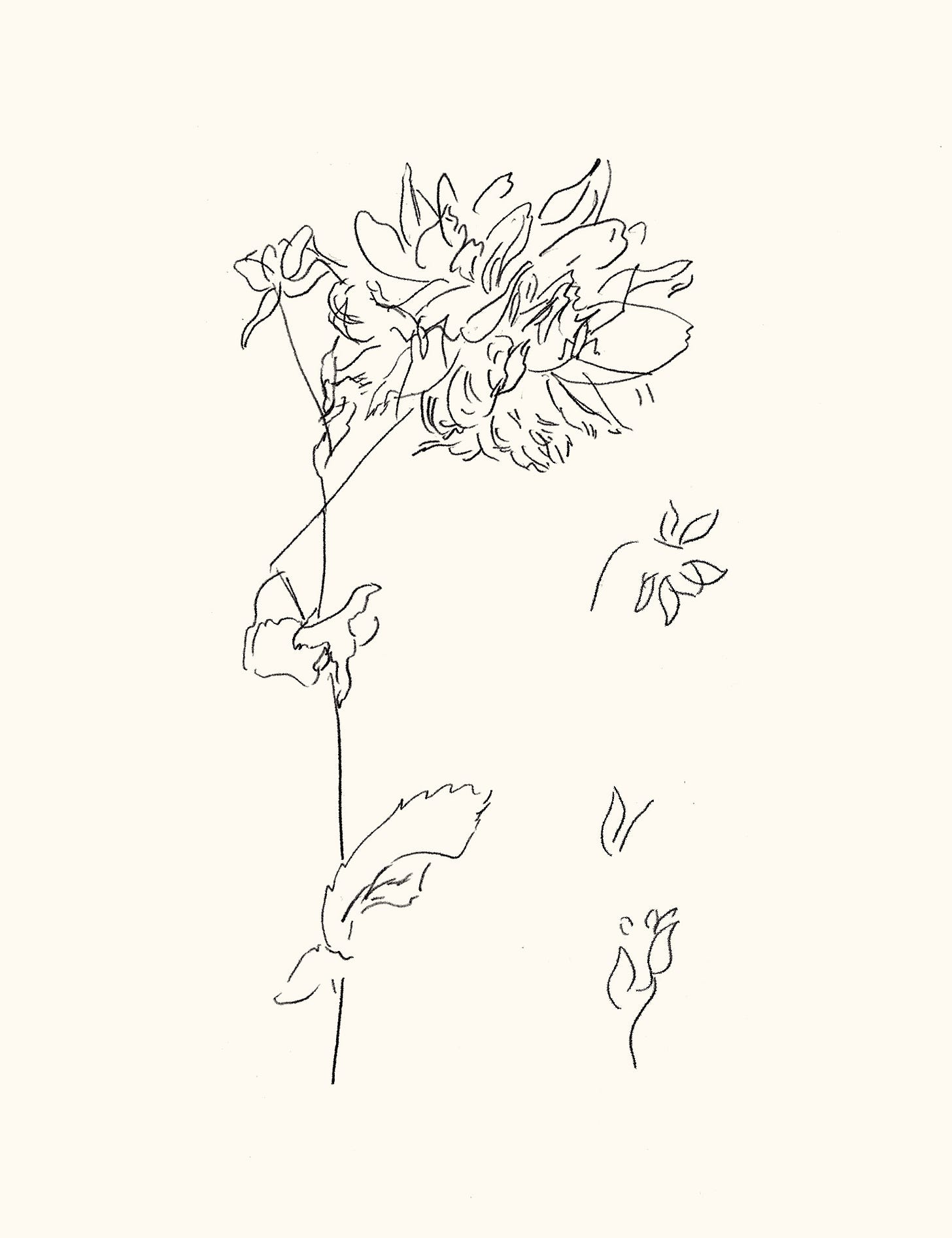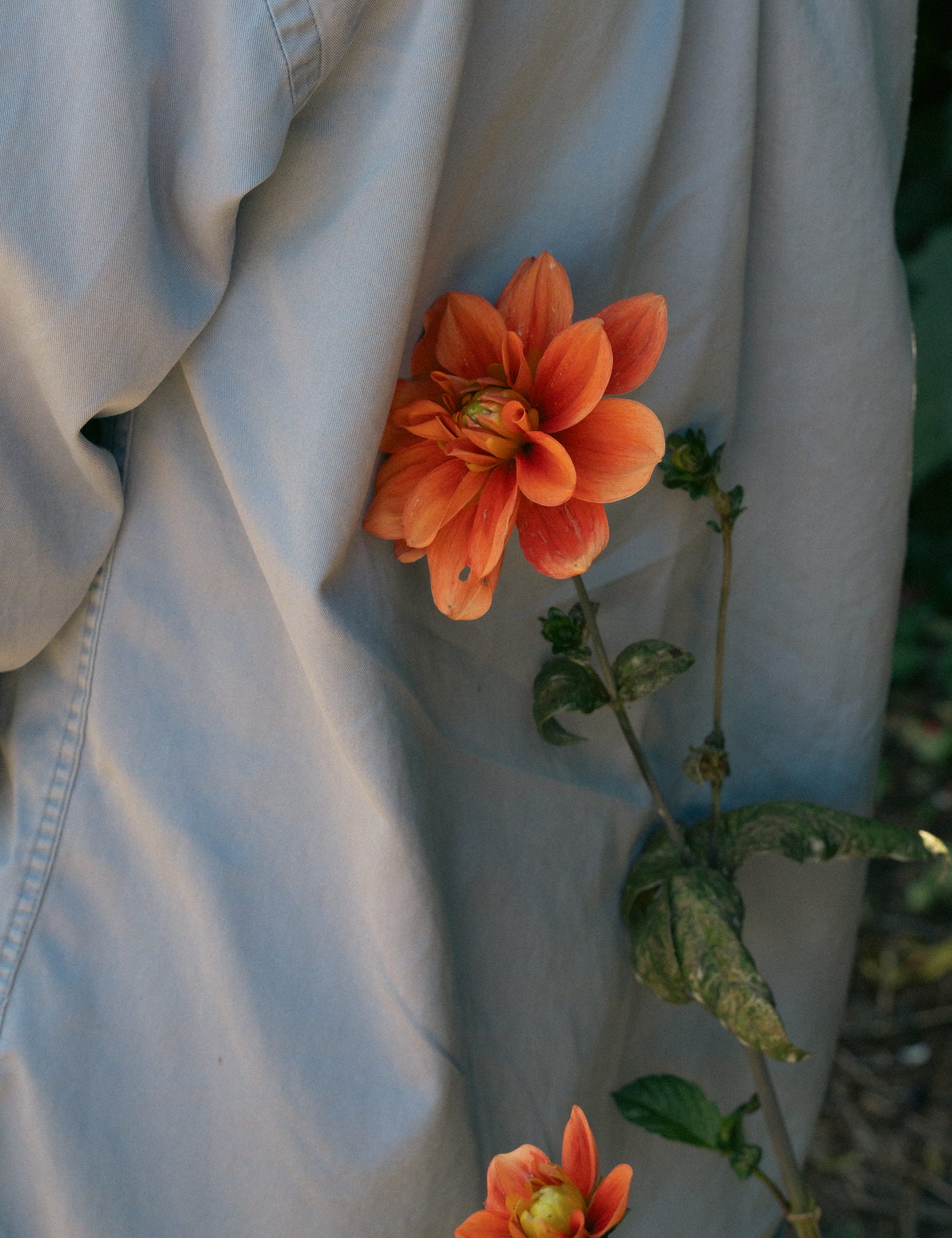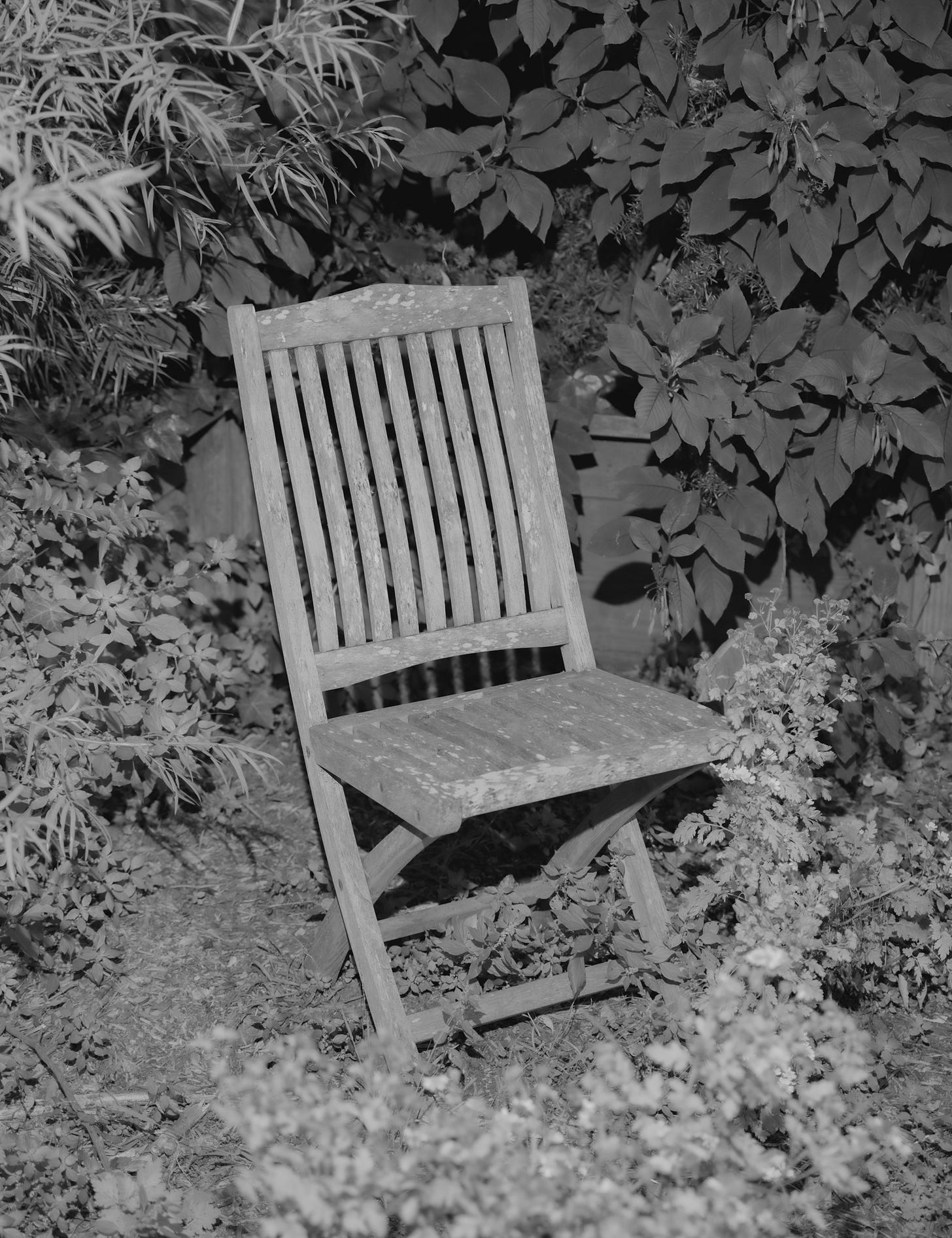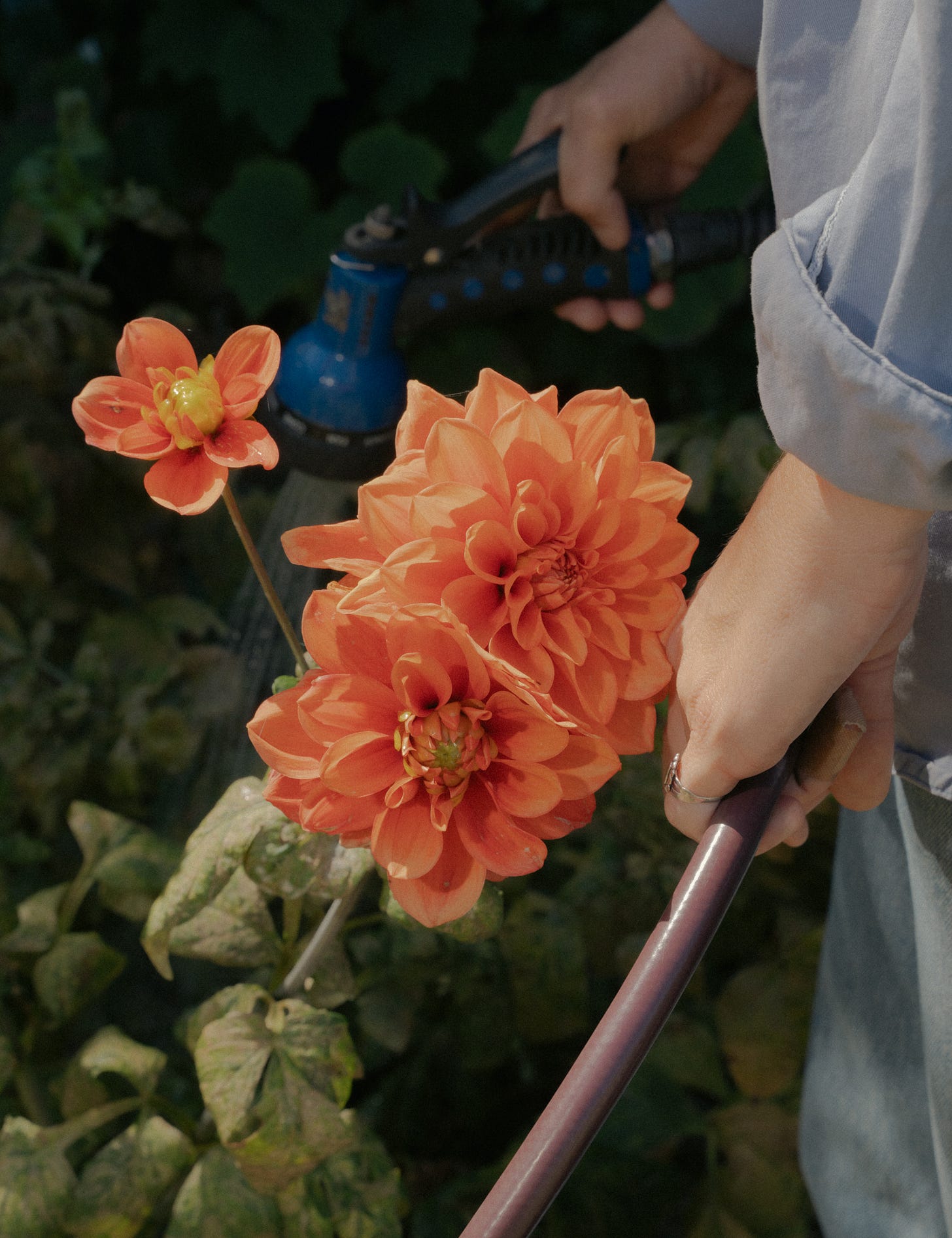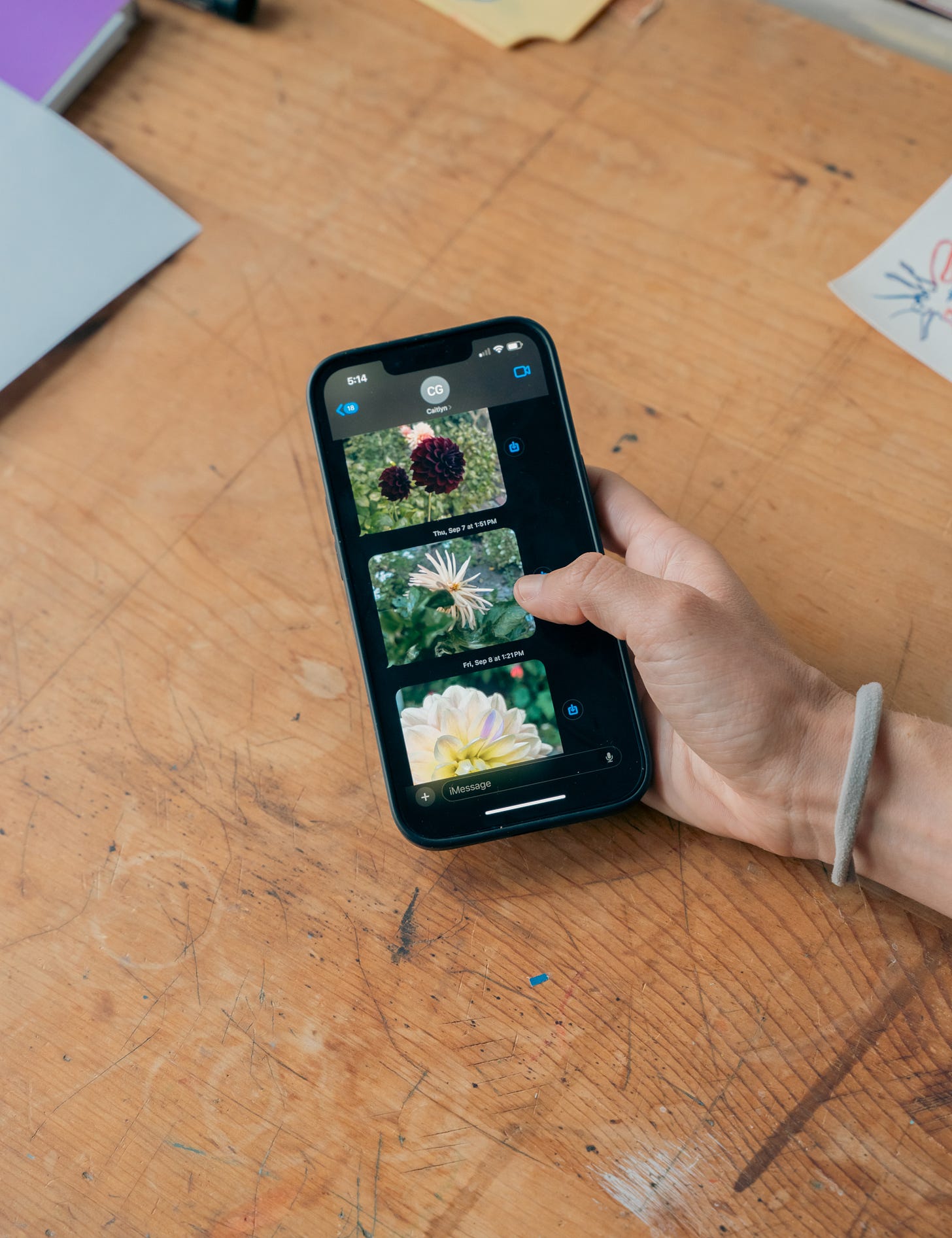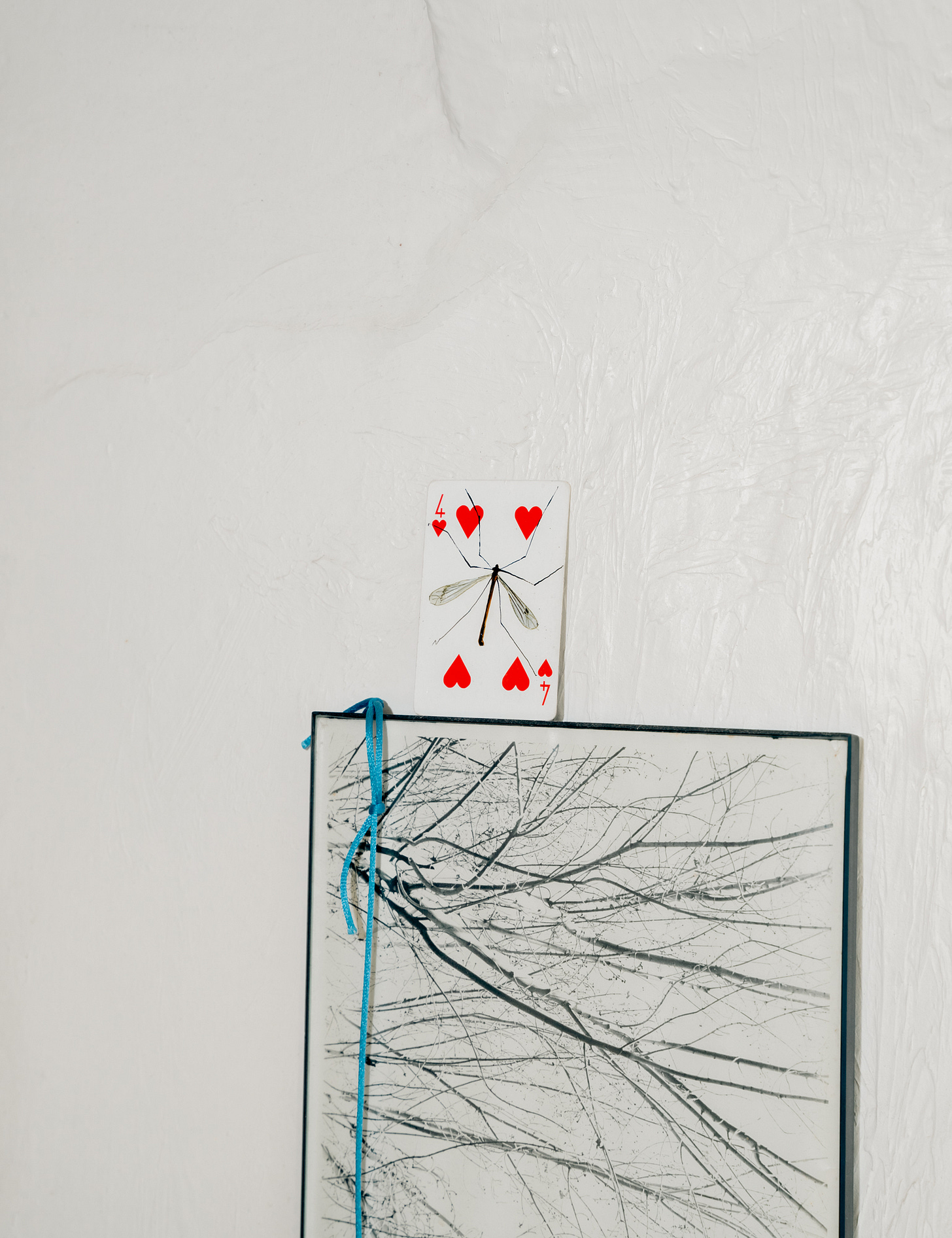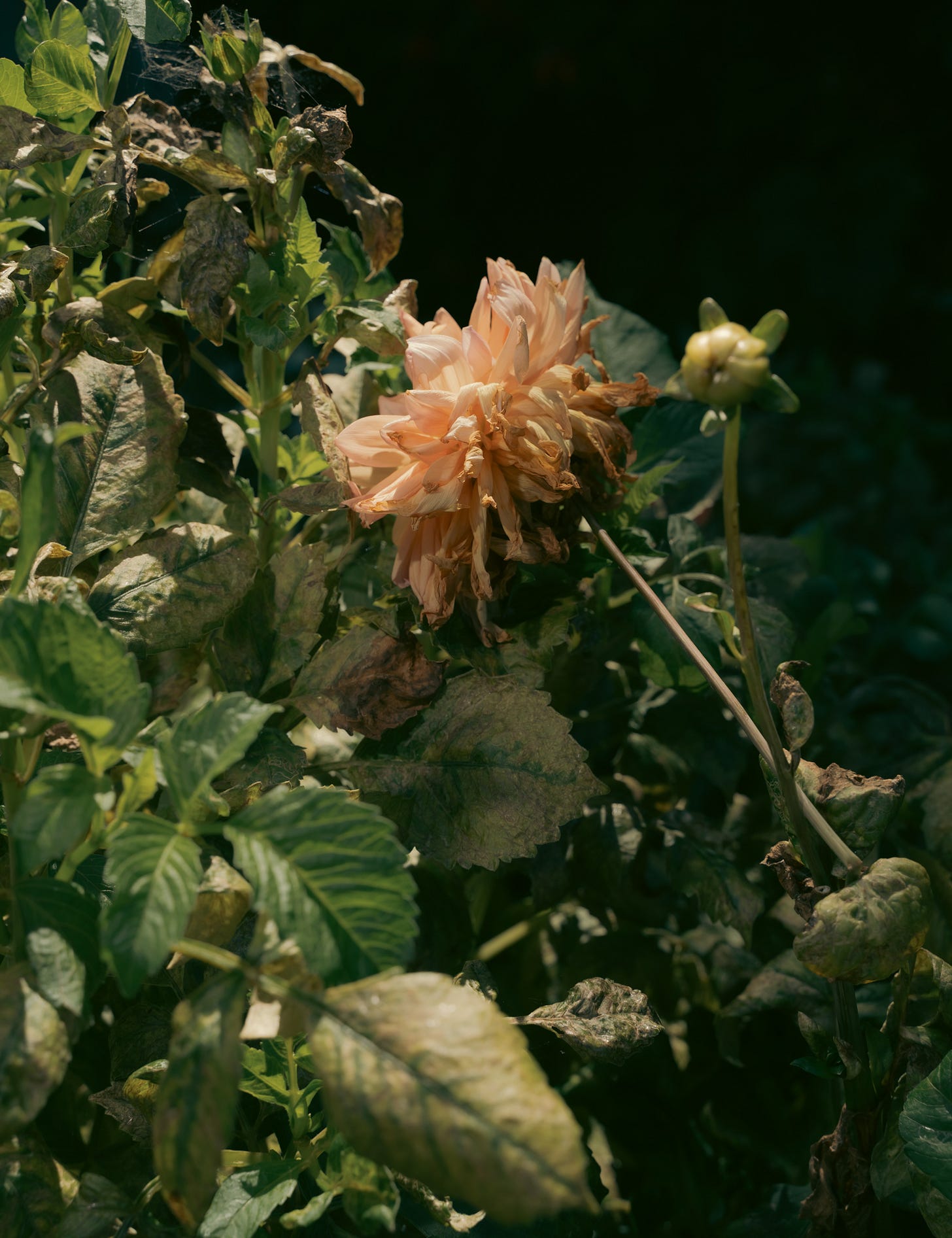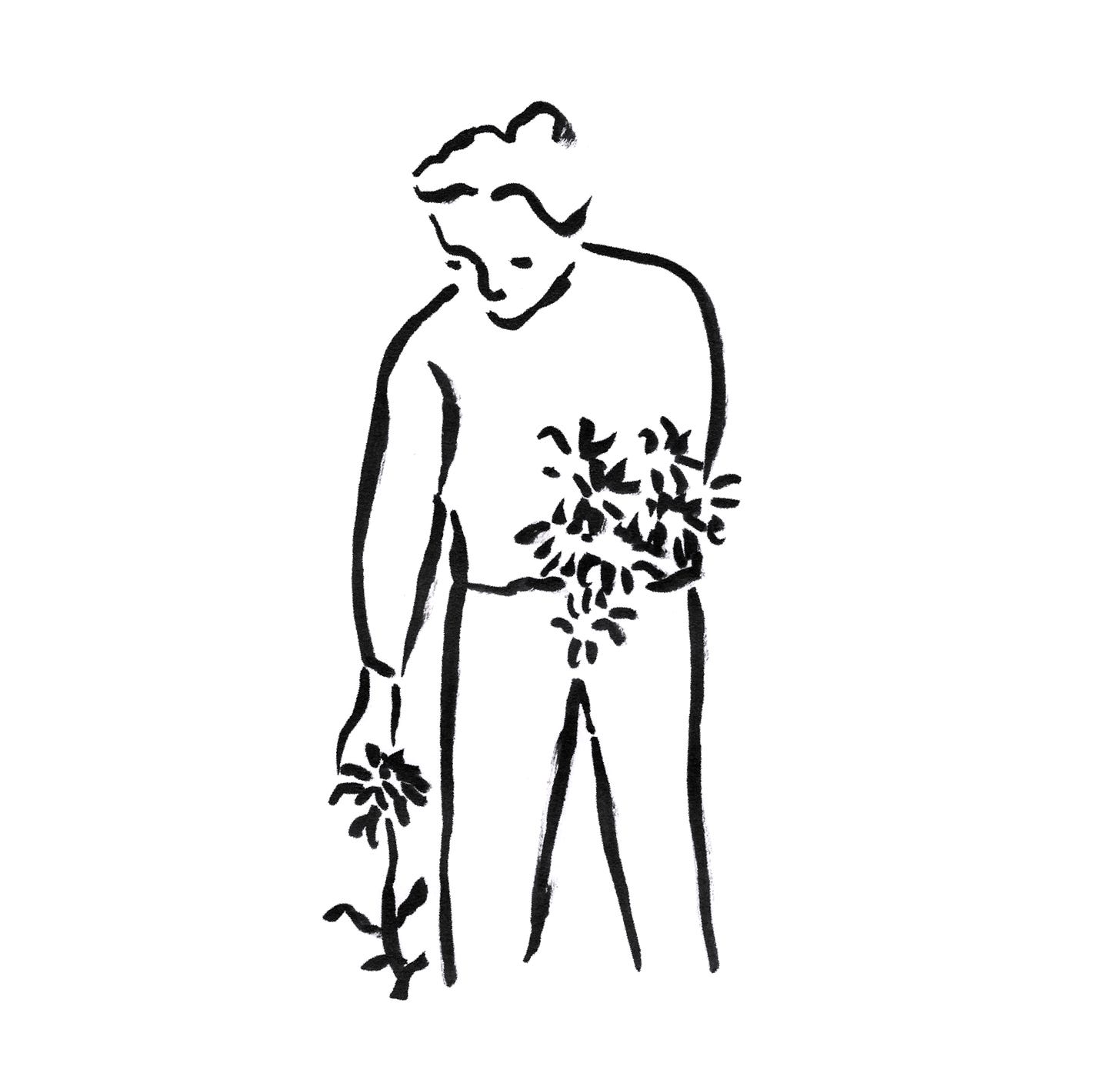Visiting as a Mutually Nurturing Act of Attention
An interview with the artist & designer Caitlyn Galloway
We first met Caitlyn through her work in facilitating, fostering, and advocating for spaces of urban agriculture in the city of San Francisco. It was during the early days of the pandemic that we first received one of her dahlia-image transmissions, and it truly felt like a gift had been delivered every time our screens would light with the push-notification of a bloom. Since then, we have been perpetually moved by the ways Caitlyn nurtures the living and communal spaces surrounding her in SF. She turns inside-out any notion that a garden in an urban space is an oasis from the city, but rather that plants, in a city, posit the urgent vitality of being in community with and amidst other species in a dense environment. Caitlyn visits the dahlia’s on her way to the studio, and the plants become neighbors and city dwellers in their own right. It’s this idea of “visiting” that, to us, begins alluding to a space of social exchange that’s inclusive of other species and the environments we dwell in day to day; “visiting” as a mutually nurturing act of attention.
❧ Companion—Platform: Can you describe the space and environment in which you care for the dahlias? How did this garden come to be? Where did these dahlias come from?
Caitlyn Galloway: I used to run a farm project here in San Francisco for about eight years. In the later half of that project, we grew a lot more flowers, dahlias being one of them. I amassed a collection of dahlia tubers over those years, and when the farm closed, I was left with a lot of tubers in my life. I gave a lot of them away. I mean there were hundreds, but I kept a couple dozen. They go dormant every year but there's still life in them. They still need to be grown out each year in order to stay alive. I’ve found myself with a lot of tubers and no space to grow them because I'm a renter in San Francisco, and my apartment has no yard. So a friend of mine who lives just a couple blocks down offered the use of her backyard, and I've been growing them there for the last seven years.
They're not something I chose to make a hobby. They're kind of a remnant of a past project, like a leftover personality that sort of stuck around. They are these living things that I need to continue to figure out how to make space for.
❧ You're a steward for the dahlias! What is your process like come winter? Do you dig them up? Where do you store them?
Usually in a good year, I'll dig them up and store them in wood shavings in bins in the garage of my friend's house. In lazier years, I've left them in the ground, but that's not ideal because they can rot easily if we get a lot of rain. It's always a gamble. I lose more tubers that way. By November the plants die back and I dig them up, clean them, and store them. There has been a lot of uncertainty each fall, packing them up, as I never know if I'll be growing them in that same place the following year.
❧ In terms of the way in which you're growing these tubers as urban organisms, how well do they handle being planted in one space versus another? How did they handle being transplanted that first year?
Because of the uncertainty about whether I'll keep growing them in the same space each year, I haven’t been able to think about the growing conditions long term, and haven’t consistently invested in the soil. So I think the dahlias really respond to that. I can tell when I've done a rushed amending job or haven't really mulched the soil through the winter. The dahlias will let me know that they're not that happy. So, how well the dahlias do depends on whether I'm able to give back to this place and feed this soil.
❧ They seem resilient to instability though?
I mean, they'll grow no matter what. Some years the plants get bigger if the soil's better, or they flower a lot more some seasons than others. This year was probably the worst year I've seen, in terms of their size and their blooms. Everything just seemed really sad this year. And I think it's cumulative. I think it's because there's been a number of seasons now that I’ve neglected the soil due to uncertainty around whether or not I can grow them here the following season.
❧ How are you thinking about the next season for the dahlias?
I've decided that this fall I'd like to put some energy and time into the soil in ways that I haven't in past years, regardless of whether I plant the dahlias here next spring. It feels important to be feeding this soil no matter what right now.
❧ What are some things that you have learned or experienced since you've been tending to this particular space?
I think observation year after year of a contained space is always going to be fruitful. You're going to learn things. I know this soil. I have a good sense of what it needs and what’s happening when things aren't growing well. I know the way the light moves through the seasons, and what portions of this little patch are shaded during what months and which hours. I know what birds live in the surrounding trees. I know around this time of year the same type of spider makes its intricate webs. I think it's a seasonal thing around the bay, but there are a couple of big spiders that make their presence known this time of year in that garden. They spin huge webs right in the middle of everything.
It feels really clear to me how commitment to a space is a big part of gardening, it just takes time and repetition. I think if I were growing these dahlias in a different place every year, they would act differently and I wouldn’t know them as well. The relationship for me is really about the cycle of returning to a place season after season.
There's a whole pack of hummingbirds that live in the garden, and they come and drink from the hose when I'm watering. They haven't been around as much lately. I wonder if they move around, but in the height of the summer, they were everywhere. It was so sweet. It feels so special to be visited by a hummingbird and have it feel comfortable enough to hover nearby for more than a second.
❧ How did sharing images of the garden via text messages first come about? And how do you hope that these messages are experienced? Are there other forms of this kind of sharing or dissemination that exist in your practice?
In summer of 2020, right when everyone was the most isolated, I was hungry for connection and really wanted to share something that other people might enjoy. I sent out a call on Instagram saying, if anyone wants a daily Dahlia photo to brighten your day, let me know. I think that first year there was a real sort of depressed tenor to it, like, I'm struggling, you're struggling, let me know if you want a Dahlia photo. People responded, and it became a project that was really enjoyable. It felt really nice to go visit the Dahlias every couple days to water and just look at them, and to know that I was doing this on behalf of more than just me. Some of the people who responded were friends, and some were strangers, which was a nice mix.
I hadn't set out to make the photos themselves much of a project. They were really just going to be snapshots, but I think going to see the Dahlias with this task in mind, with this self-imposed assignment, prompted me to spend more time with them and really try to capture a lot of the personality that I see in them. So it grew into a project of sorts from there. The list of people has grown each year, with many repeat participants. I sent daily dahlia photos to 40 people this year. And the tenor of the project has evolved. It's not coming out of such depressing times and feels a little lighter now. I get the same satisfaction out of it though. It feels really wonderful to be visiting and observing these flowers with other people in mind.
❧ We've been so fortunate to be at the receiving end of this project, and other “gifts” that you’ve sent out…
I’m really just seeking connection, and it works. It really does help. So I think a pro-tip for anyone who is stuck in their studio feeling isolated or feeling unseen; it really does help to make an offering and share your work in that way. I recently made an edition of paintings of crane flies on playing cards, which emerged from a similar impulse. These projects are a good reminder to myself that creativity or art making feels the best for me when it's in community, and when I truly feel like I'm sharing something or feeling connected.
❧ If we remember correctly, the playing cards, the edition that you created, it was an open call to receive a gift?
Oh yeah! I think I said “send me your address if you’d like me to send you a gift.”
❧ It was a really wonderful experience to opt into receiving a gift!
It’s a funny experiment to put out an open call like that, but I did it in earnest. I think it's interesting to see how people react. And out of the 50 people that I end up connecting with, maybe two or three of those connections are reciprocated in some way, and that can be super rewarding and surprising.
I've been noticing crane flies for a really long time. In college twenty years ago I was drawing them with thread on paper. I love how weird and gangly and fragile they are. I think I sent out drawings of them during the pandemic as well, as a similar type of offering. They are like talismans in the way that they return every year. They appear so suddenly, and then they’re everywhere in my apartment. I've grown to feel like they are a gift. They bring some kind of reminder, of I don’t know what. A reminder of life.
❧ Do you find yourself painting them particularly when they return in spring?
This is the first year I've painted them. In the past I've drawn them because they're really fun to draw.
❧ We have the card that you sent with the crane fly painting, and its presence in our studio feels very special. It also feels like a gift or an invitation that you have given us to observe and delight in their re-emergence each season.
Are there other ways the act of caring for these Dahlias is interconnected to the other parts of your creative practice?
I think caring for dahlias is connected to the rest of my practice in ways that maybe aren't totally evident but feel very true to me. I’m challenged by the need to present a legible, digestible identity as an artist. It’s hard for me to sell myself as an artist, because so much of my practice has seemed on the surface to be unrelated. I think if I try to articulate a connection from my farming work, to my advocacy work, to my studio practice, and even to my sign painting and lettering work, there is something that ties these all together pretty clearly to me, and that is a search for life. As huge as that sounds!
I live in the city and I feel really committed to what that means. What I notice, all the aspects of the city that I feel the most compelled by, are the parts that feel very alive. Handwritten notes or signs, tags, painted sidewalk markings, stacked layers of paint, music coming from different directions, wild mixtures of plants.
The city is a collection of interactions, people, and plants right up next to each other, interacting. This environment is a starting point for many parts of my practice. I'm growing these dahlias not just anywhere but in the city, specifically. I'm looking at them as living beings in the city, as neighbors of sorts.
My thoughts in my studio over the last decade usually come out of this impulse of noticing, highlighting, celebrating, or questioning aspects of being in a city and what feels alive here. Returning to the dahlia photos, there's usually a trajectory over a four week period when I'm sending those photos. They start out as photos of individual blooms, but then in my view the photos get much better as the season progresses because the plants age and get more interesting, with decaying leaves and twisting limbs. The plants, or the individual blooms, then start to fall over and lean on their neighbors and interact with each other in a more organic way. What was a patch of individual plants becomes a tangle of interaction and surprises. There’s music to the whole scene at this point, or conversation. I think if I had to name a through line in my work, or a constant source of inspiration, it would have something to do with this.
❧ There's something really wonderful too in growing and caring both for the space, and these dahlias, in an urban environment. The act of going to visit them feels like there's something very specific to being in a city, growing these plants in this way in a city. And the fact that you have to leave your home and walk down the sidewalk to go visit them. We’re thinking about this at the backdrop of so many garden spaces, especially in cities, being designed as private oases, a space trying to not be in a city in a way. Attempting to be sheltered by plants and to feel like you're not in an urban space, but it feels like there is something so beautifully urban about having to pack your lunch and go for a walk down the street to go visit the dahlias, and the act of visiting is even more about being in a city rather than trying to shelter yourself from it.
That's exactly how it feels and is what’s the most inspiring to me. I feel a lot less moved by framing my relationship with these dahlias as me being a gardener and them being my hobby. It feels so much more true to me to think of my relationship with them as similar to someone's relationship with the person who runs the corner store that you pass by every day. I find myself becoming familiar with this patch of soil not unlike the way that someone might be familiar with the three city blocks they pass through every day on their walk.
I've learned that there's a deeply ingrained, rigid understanding of what belongs in cities. I think there is a dominant assumption that city residents shouldn't have to see too much process, but rather final products with clear metrics for impact or success. That's become very apparent in my work, trying to advocate for these types of agricultural spaces that are dwindling. I've devoted a lot of time in the last decade to thinking about how agriculture in cities is dictated by what kind of activity belongs and what doesn't. I think that there's still a lot of room and urgent need to explore the gray area between those two.
Caitlyn Galloway is an artist and designer based in San Francisco. In addition to her studio practice, for eight years she founded and operated an intensive working farm in the city, growing food and flowers. The farm was a real-time experiment in the viability of urban agriculture and an acre-sized sculpture, a platform for observation, and a living conversation. She has been a trained sign painter for more than a decade.
All images and illustrations by Companion-Platform ©2023







